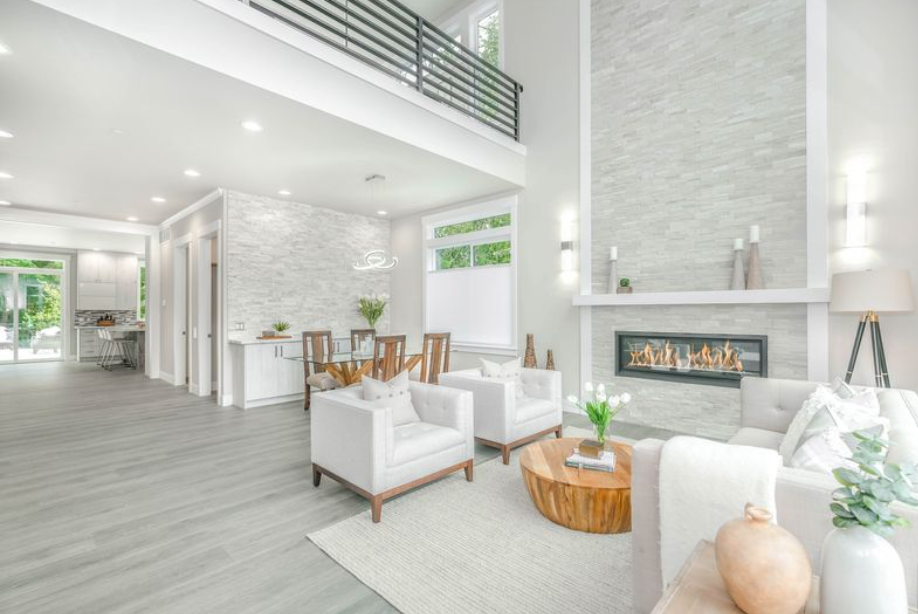
Smart home technology has become an essential feature for homeowners, offering unparalleled convenience, energy efficiency, and security. When integrated seamlessly into a remodeling project, smart technology features not only enhance the functionality of your home but also adds value and appeal. From smart lighting to connected appliances, integrating smart technology can turn any remodeling project into a modern, efficient, and highly functional space.
In this guide, we’ll explore the best ways to incorporate smart technology into your remodeling design, creating a home that’s ready for the future.
Why Integrate Smart Technology in Your Remodel?
Smart technology can transform the way you interact with your home, allowing you to control everything from lighting to security with a simple voice command or tap on your smartphone. Here’s why smart home tech is a valuable addition to any remodeling project:
- Increases Convenience: Automated systems make everyday tasks simpler.
- Boosts Energy Efficiency: Smart thermostats, lighting, and appliances help reduce energy consumption.
- Enhances Security: Smart cameras, locks, and alarms protect your home with real-time monitoring.
- Adds Property Value: Smart homes are in demand, making them attractive to potential buyers.
Let’s dive into the top smart home technologies to consider as part of your remodeling project.
1. Smart Lighting Solutions
Smart lighting can set the mood, reduce energy costs, and improve security. Modern smart lighting systems offer dimming, color-changing options, and even the ability to sync with your daily routine.
How to Integrate Smart Lighting:
- Install Smart Bulbs and Fixtures: Use smart bulbs or integrated fixtures with Wi-Fi or Bluetooth connectivity.
- Consider Motion Sensors: In areas like hallways or entryways, motion sensors automatically turn lights on when needed.
- Voice Control Compatibility: Choose systems compatible with voice assistants like Alexa or Google Assistant for hands-free control.
Benefits:
- Reduced energy costs through automation.
- Enhanced ambiance with customizable lighting options.
- Increased security with scheduled or motion-activated lighting.
2. Smart Thermostats for Efficient Climate Control
Smart thermostats are a popular choice for energy efficiency. These devices allow homeowners to control temperature remotely, set schedules, and even learn your preferences over time.
Integration Tips:
- Choose a Smart Thermostat That Connects to Your HVAC System: Ensure compatibility with your heating and cooling system.
- Opt for Zoning Control: With larger homes, zone control lets you adjust temperatures in different areas for maximum comfort and efficiency.
- Set Energy-Saving Schedules: Program the thermostat to lower energy use when you’re not home or during off-peak hours.
Benefits:
- Lower energy bills through efficient temperature management.
- Personalized comfort with learning features.
- Remote control, allowing adjustments from anywhere.
3. Smart Security Systems
A comprehensive smart security system adds peace of mind with features like video monitoring, doorbell cameras, motion detectors, and smart locks. These systems allow for real-time monitoring and instant alerts, providing full control over your home’s security.
Integration Tips:
- Install Smart Locks on Entry Points: Replace traditional locks with smart locks that allow keyless entry.
- Add Security Cameras with Mobile Access: Opt for cameras with HD resolution, night vision, and motion sensors.
- Consider a Smart Doorbell: Video doorbells provide live video and audio, allowing you to see and speak with visitors.
Benefits:
- Increased security with remote monitoring and real-time alerts.
- Keyless entry for added convenience.
- Improved access control for deliveries and visitors.
4. Connected Kitchen Appliances
Smart kitchens make daily cooking and cleaning tasks easier, with connected appliances like smart refrigerators, ovens, and dishwashers that can be controlled remotely or programmed for specific routines.
Integration Tips:
- Install a Smart Refrigerator: Modern models offer features like built-in cameras, touchscreen displays, and automatic grocery lists.
- Upgrade to a Smart Oven or Range: Smart ovens let you control cooking temperatures and set timers remotely.
- Consider a Smart Dishwasher: Look for models that offer cycle notifications, energy-saving modes, and even voice control.
Benefits:
- Saves time and effort with remote appliance control.
- Increased energy efficiency with appliance optimization.
- Enhanced convenience with personalized settings and alerts.
5. Smart Audio and Home Theater Systems
Smart audio systems, including whole-home audio and voice-controlled speakers, are becoming staples in modern homes. Integrating a smart home theater system can turn your living room or media room into an immersive entertainment space.
Integration Tips:
- Plan for In-Wall or Ceiling Speakers: Concealed audio systems blend seamlessly into the design while providing high-quality sound.
- Choose a Voice-Activated Speaker System: Connect speakers to a smart assistant for easy voice control.
- Sync with Smart TVs and Lighting: Create a cohesive entertainment experience by syncing lighting and audio systems with smart TVs.
Benefits:
- Enhanced home entertainment experience.
- Voice control for hands-free operation.
- Customizable sound settings for different rooms.
6. Smart Bathroom Fixtures
Bathrooms are an ideal space to integrate smart technology, from automated lighting to smart mirrors and water-saving fixtures. These upgrades offer both convenience and efficiency.
Integration Tips:
- Add a Smart Shower System: Control water temperature and flow remotely or set preferences for different users.
- Install a Smart Mirror: Some models offer LED lighting, anti-fog features, and even weather updates.
- Choose Water-Saving Fixtures: Smart faucets and toilets can help reduce water use and offer touchless operation.
Benefits:
- Improved energy and water efficiency.
- Luxurious, spa-like experience with customizable settings.
- Modern, tech-forward bathroom space.
7. Automated Window Treatments
Smart blinds or shades allow you to control natural light and privacy with the touch of a button or voice command. These can be programmed to adjust throughout the day, maximizing comfort and energy efficiency.
Integration Tips:
- Use Motorized Shades: Motorized shades or blinds are easy to install and work seamlessly with smart home systems.
- Set Up Daylight Schedules: Program your blinds to adjust automatically to control light and temperature.
- Choose Compatible Systems: Make sure the window treatments integrate with your main smart home platform.
Benefits:
- Enhanced comfort and privacy.
- Energy savings by controlling sunlight exposure.
- Added luxury with automation options.
8. Centralized Smart Home Hub
A smart home hub is essential for seamless integration, allowing you to control all smart devices from a single app or interface. Choosing a central hub compatible with all your devices ensures a smooth user experience.
Integration Tips:
- Choose a Hub with Wide Compatibility: Systems like Google Nest, Amazon Alexa, or Apple HomeKit work with most smart home devices.
- Install a Wall-Mounted Controller: Wall-mounted controllers make it easy to manage your devices without relying on mobile apps.
- Sync Devices for Automation Routines: Create routines that activate multiple devices, like turning on lights, adjusting thermostats, and playing music with one command.
Benefits:
- Simplifies control by consolidating device management.
- Creates efficient routines for daily tasks.
- Future-proofs your home for additional smart devices.
Planning for Smart Home Technology in Your Remodel
To ensure your remodeling project incorporates smart technology effectively, follow these tips:
- Define Your Goals: Determine which areas of your home and lifestyle will benefit most from smart upgrades.
- Choose Compatible Systems: Ensure devices and systems are compatible to avoid connectivity issues.
- Consider Wiring Needs: Some smart systems may require additional wiring; plan for this during the remodeling phase.
- Work with Experts: Consult with contractors experienced in smart home integration to avoid common installation challenges.
Final Thoughts
Integrating smart home technology into your remodel is a strategic way to boost your home’s value, comfort, and functionality. With advancements in smart lighting, security, kitchen appliances, and more, you can create a modern, energy-efficient, and secure home that’s ready for the future.
From planning and selecting devices to installation and programming, each step brings you closer to a more connected and convenient living experience.





